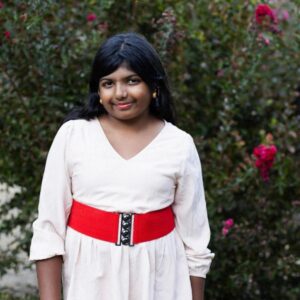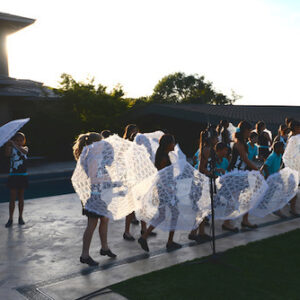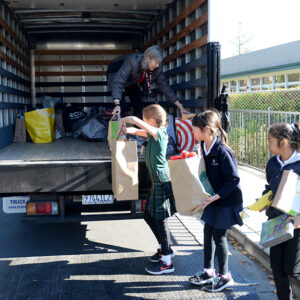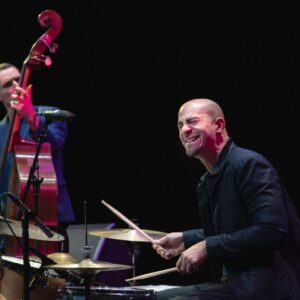This story was originally published in the Spring 2012 issue of Harker Quarterly
While pushing my son on a swing the other day I noticed that he did not know how to swing himself. It is one thing when your son needs help getting on the swing – some are pretty high – but it’s another when he needs you, once he is on the swing, to get going at all. I began talking him through how to swing himself when I noticed another thing: explaining to a child how to swing himself is not easy. What do you say? It is sort of like explaining how to tie your shoes. Where do you begin? To swing, you have to lean back, pull with your arms, project your legs into the air. By the end my son looked like a piece of dough.
I then realized a third thing (it was a day full of epiphanies). I had never been taught how to swing – I had just learned on my own. I am not even sure how or when I learned. I then began thinking about all of the skills I had learned on my own through playing with kids in the neighborhood. Swimming. Throwing and hitting a ball, any kind of ball. Riding a bike, skateboarding, ice skating. Even bowling. And we didn’t just learn these skills, but we internalized the rules of the games as well. We knew enough to argue ferociously about right and wrong.
As I thought about it, my friends and I learned all of these skills organically, without a single lesson, parent or adult to help. If we hadn’t learned these skills we would have been excluded from a load of play and none of us wanted that. My boys, on the other hand, will learn none of these skills without me or some structured program. In other words, they will require the direct intervention of adults to learn these skills. Most of the children I grew up with simply did not take private lessons of any sort. Today, almost all children take some kind of private lesson or are in some structured activity.
I am not judging the present or recalling the good old days of the past. In fact, there was nothing special about our learning these skills ourselves. We learned these skills like we learned how to walk and talk – naturally. There was actually no way we could not learn them. However, my sons most likely will not learn them without my direct intervention. Why the change? What does it mean, if anything, that some children are growing up in a community where learning skills like these will not happen naturally, without direct instruction? If this is a symptom, what is the disease?
After all, learning these kinds of physical skills organically, through neighborhood play, implies a whole set of conditions that support organic learning the way that rich soil supports plant growth. As for conditions, the neighborhood needs mixed age groups among its children so that the older kids pull up the younger ones. There needs to be extended family, like cousins, aunts, uncles. The kids need to have large amounts of unbroken, unsupervised time for play. They need a common set of goals, meaning that most of them have to find playing baseball or riding bikes fun. There needs to be a loose, mutual understanding between parents, almost like unspoken radar. The children need a neighborhood structure that supports them finding each other in these informal, unstructured, but safe environments. They need, well, a neighborhood.
I am not saying that neighborhoods with playing children do not exist today. They even have a name for them – “playborhoods.” There is a website called playborhood.com that is dedicated to promoting free, unstructured play in neighborhoods precisely because it is difficult to find. However, the facts that a website exists to promote free play and that neighborhoods with open play have a special name tell us something. As Kenneth Jackson says in “Crabgrass Frontier,” a history of American suburbs, “There are few places as desolate and lonely as a suburban street on a hot afternoon.”
What do children learn in unsupervised neighborhood play? They learn socialization, to use a common buzzword today. I am pretty sure my aunts and uncles never used that word. The kids were just doing what they were supposed to do, which was play. They also learn what we now term 21st-century skills, like collaboration, communication and creativity, though none of my friends ever used or even understood those terms. We had to collaborate, communicate and create, otherwise we wouldn’t have any fun.
I did teach my son to pull up and swing himself that day. I still think he prefers to have me push him, but at least he can now swing himself independently. I watch my son among the other kids, followed around by their parents who are instructing, encouraging and preparing them for an uncertain future, arming them with all of the skills they can possibly absorb during their fleeting childhoods. When I see him across the playground, pulling himself up on the swing, flanked by children he doesn’t know, looking across at me smiling with pride, I become a little wistful for the days when children learned these things on their own.











